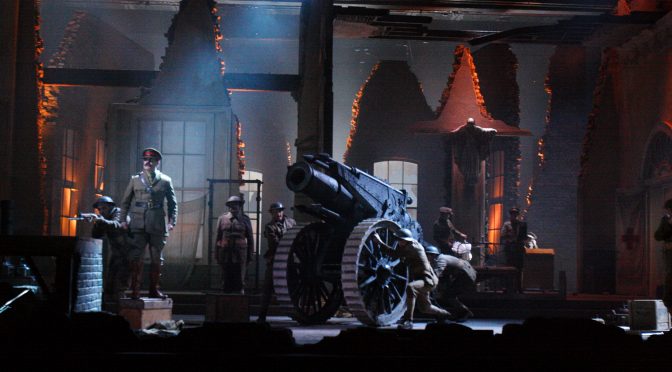There are no surprises here. Howard Davies’ new production, co-directed with Jeremy Herrin, is the quality affair you would expect from the veteran director. Utilising the National Theatre’s expert stage management, and with a typical respect for a classic text, this show drips class.
It’s a forgivable irony that Sean O’Casey’s play about the Irish Easter rising of 1916, which focuses so much on the lives of the poor, should receive such a luxurious treatment. Vicki Mortimer’s set appears impressively expensive – it takes a lot of money to look that cheap – while detail and care run through the whole show.

With a steely confidence, Davies and Herrin take us deep into the lives of those living in a Dublin tenement house. Flynn and Covey (Lloyd Hutchinson and Tom Vaughan-Lawlor) argue over politics while an agnostic drunk, made loveable by Stephen Kennedy, looks on. A good deal of humour is injected (I’m not quite sure O’Casey expected so many laughs at socialism) with the drama coming from the more serious Jack Clitheroe, portrayed convincingly by Fionn Walton, the one man willing to fight, despite his wife’s protestations.

The action doesn’t get going until the second half but when fighting starts the trauma of the battle is intense. Suffering focuses on the women and it’s the actresses who steal this show. Two great renditions of battle-axe neighbours come from Justine Mitchell and Josie Walker. On opposing sides of the struggle, their sniping is full of wit, but when care for one another creeps out it’s genuine and moving. As Clitheroe’s pregnant wife, Nora, Judith Roddy has a traumatic role; driven “mad with terror”, her whole body becomes rigid in the play’s relentless finale.
Added to these fine performances is a double achievement on the part of this production. The history and its frustrating complexity are clear; O’Casey presents many arguing sides and the directors do this justice. Also understood is the aim of showing the effects of violence on the most vulnerable, making the piece strikingly relevant. With no sense of the contrived – just theatrical power – this is a grade-A show.
Until 22 October 2016
Photos by Johan Persson




